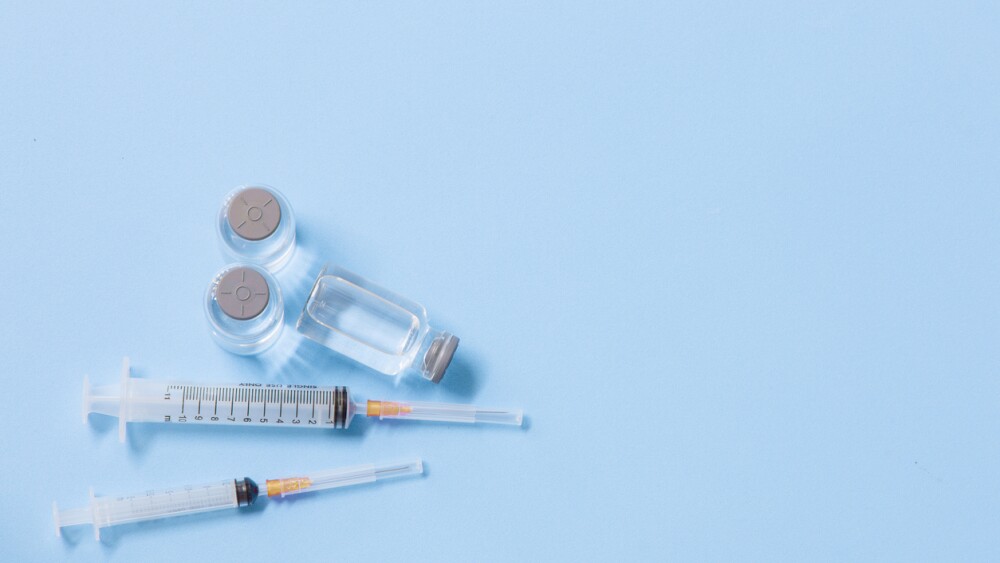From the skin to the lungs to the central nervous system, biotech companies are making progress toward delivering RNA therapeutics to multiple targets throughout the body. But challenges remain.
Pictured: A collage of medical notes and anatomy/Nicole Bean for BioSpace
With all the recent headlines being made in genetic medicine, a presentation from Turn Biotechnologies announcing the first successful in vivo delivery of messenger RNA to the skin with no off-target effects flew largely under the radar. While Turn Bio will still need to prove its platform in the clinic, the news may mark another step toward surmounting the hurdles the industry has faced with delivering RNA therapeutics outside of the liver.
The potential for RNA-based medicines is great. As current small molecule and antibody drugs target only around 0.05% of the human genome, RNA therapeutics—including antisense oligonucleotides (ASOs), small interfering RNA interference (siRNA) and mRNA therapeutics—could significantly broaden the range of druggable targets, if they can safely and accurately reach their destinations.
The discovery a decade ago that the conjugation of GalNac, an amino sugar moiety, to siRNA and ASO drugs could efficiently target the liver was a significant breakthrough for RNA therapeutics. Alnylam’s Amvuttra (vutrisiran), for polyneuropathy of hereditary ATTR (hATTR) amyloidosis, makes use of GalNac delivery, as does Novartis’ Leqvio (inclisiran), which reduces bad cholesterol and was discovered at Alnylam. The problem, Iris Grossman, chief therapeutics officer at Eleven Therapeutics, told BioSpace last year, is that very few similar mechanisms have been discovered.
Endosomal Escape and Targeting
Steven Dowdy, a professor of cellular and molecular medicine at the University of California, San Diego, placed the challenges to extrahepatic delivery into two categories. For mRNA therapeutics, the biggest obstacles are specific targeting and immunogenicity, Dowdy told BioSpace. For RNA conjugates like ASOs and siRNAs, he said, the main challenge is endosomal escape.
RNA therapeutics are taken up into the cell by endocytosis, but 99% or more of them are entrapped in an acidified endosome and degraded. The human body has developed natural defenses against RNA-based viruses, making the immune system resistant to foreign RNA. “Our therapeutics look to the body, to cells, like invading RNA,” Dowdy said. Most drug developers ensconce mRNAs in a lipid nanoparticle (LNP), which acts as both a protective shield and an endosomal escape device and allows around 5% of the therapy to make it unscathed into cells. Small RNA therapeutics lack such an endosomal escape device, so only 0.3% to 1% of the conjugate escapes the endosome into the target cell.
In mRNA delivery, Dowdy said, targeting is the rate limiting step. While the APOE protein binds efficiently to the surface of certain LNPs, carrying them to the liver, he said similarly targeted proteins that enable the RNA to reach, say, the pancreas or cardiac myocytes, don’t exist. While chemists are trying to synthesize different types of lipids to bind proteins that would carry the LNP to other cell types, Dowdy said this has proven a difficult problem to solve for highly specific targeting.
The Largest Organ
For Anja Krammer, CEO of Turn Bio, the first objective is to effectively deliver the RNA to the cell itself. To solve this challenge, the company is creating tuneable RNA, which involves precisely delivering cargo to the cell and controlling the expression of the genetic information it carries. “Cells throughout the body and in different tissue types have very different responses and require a different level of delivery,” Krammer told BioSpace. Turn Bio’s pipeline includes investigational therapies for skin wounds, cellular exhaustion and frailty.
The second component, she said, is the vehicle that carries the RNA into a specific tissue type. Turn Bio found that carriers used for mRNA vaccine delivery were not effective or efficient enough for therapeutic delivery, so the company developed a proprietary LNP system with its own ionizable lipid.
With vaccines, “you need just a very small amount of reaction in the body to be able to trigger that immune response,” Krammer said. But with a large organ like the skin, “you need to be able to hit a lot of cells, need to be able to transfect a lot of cells, and chances are, you’re gonna need to do it more than once.” Current tissue delivery systems create a lot of immunogenicity due to the PEG lipids used to keep them stable, she added.
Turn Bio’s proprietary approach uses a stabilization system with a controlled release specific to a particular tissue environment. The preclinical data reported in November showed that “we now can contain that delivery within the skin tissue without the uptake into organs” such as the liver and spleen, Krammer said. The company plans to submit an Investigational New Drug application by the end of 2024.
The Central Nervous System
RNAi therapies like Alnylam’s Amvuttra and Onpattro (patisiran)—which both target the liver—work by silencing particular genes that cause or contribute to disease. They do so by degrading the genes’ mRNA.
Alnylam’s medicines leverage one of two platforms. In the first, siRNA is encapsulated within an LNP and delivered via IV infusion. Onpattro, the company’s first approved drug, for polyneuropathy of hATTR amyloidosis, is delivered in this way. In the second, a modified siRNA is conjugated to a targeting ligand to help it locate a specific cell or tissue within the body. The modifications provide stability against nucleases that would otherwise degrade the siRNA and also help minimize immune recognition of the siRNA, said Alnylam Chief Technology Officer Vasant Jadhav. Alnylam uses two conjugate systems: GalNAc conjugates and central nervous system (CNS)-targeted siRNA conjugates.
Having proven its platforms with Onpattro and Amvuttra, Alnylam is turning its attention to the central nervous system.
“RNAi is not limited to [the] liver,” Jadhav told BioSpace. “RNAi is a naturally occurring mechanism that’s happening in all cells and tissue types.” Some of these are in the CNS, where he said there are many genetically validated targets.
Based on the delivery advances of the past 20 years, “we have highly modified siRNAs that have a targeting or delivery ligand that allows [the therapeutic] to be taken up in CNS,” Jadhav said.
In October, Alnylam announced that its Alzheimer’s disease candidate, ALN-APP, showed sustained pharmacodynamic activity up to 10 months after administration in a Phase I trial. The treatment also led to “marked reductions” in two amyloid fragments implicated in Alzheimer’s and cerebral amyloid angiopathy, according to the company press release.
“We’re really pleased with what we’re seeing in terms of the conjugates going from liver to now achieving this human [proof of concept] with the CNS molecules,” Jadhav said.
The Lungs
Clinical progress is also being made in delivering RNA to the lung. Jerusalem-based SpliSense is targeting a cystic fibrosis mutation with its ASO, SPL84. A short, vector-less single strand of RNA delivered directly to the lung via inhalation, SPL84 is designed to restore the function of the CFTR protein. In a recently completed Phase I study, it was shown to be safe and well tolerated in 32 healthy male volunteers. A Phase II trial, which will test the ASO in 18 cystic fibrosis patients carrying the 3849+10 kb C->T mutation, is slated to begin in the first half of next year.
In a recently published preclinical study, SpliSense demonstrated the potential superiority of its inhaled approach to standard-size LNPs. In the study, which tested SPL84 in mouse and monkey lungs, the authors wrote that the candidate diffuses more effectively than these LNPs, primarily due to its small size.
In comparison to Vertex and Moderna, whose CF program, VX-522, uses a LNP for delivery, SpliSense CEO Gili Hart said her company’s approach is “one hundred times more effective in relation to migration in the lungs.”
In an interview last year, Ashley Mahoney, director of external communications at Vertex, told BioSpace that the company had successfully identified an LNP that can deliver the CFTR mRNA to target cells at levels that result in CFTR function levels associated with clinical benefit.
While he declined to hazard a guess as to the next organ to see successful RNA delivery, Dowdy said: “If and when we solve the endosomal escape problem in a safe manner, that will open up the ability of RNA therapeutics to selectively treat . . . cancer, COVID and a multitude of other diseases.”
Heather McKenzie is a senior editor at BioSpace. You can reach her at heather.mckenzie@biospace.com. Follow her on LinkedIn.
Update (Dec 4): This story has been updated to reflect that Leqvio was initially discovered at Alnylam.









